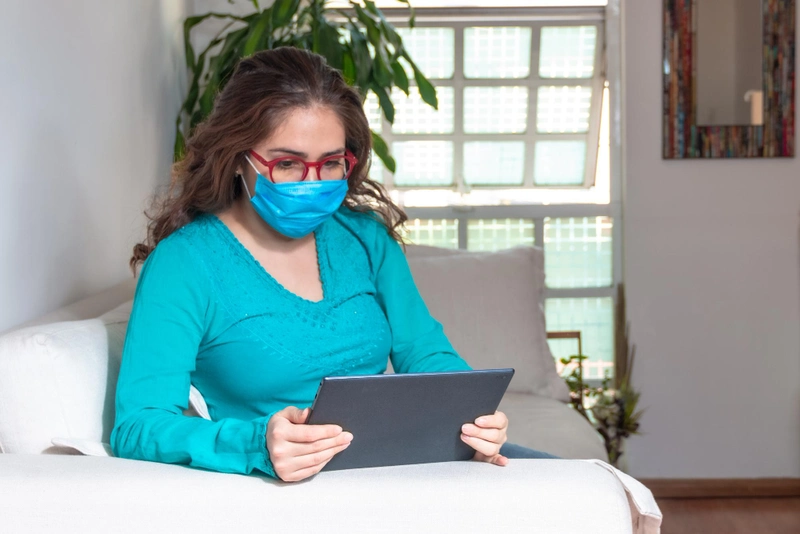- Published on: Nov 12, 2025
- 2 minute read
- By: Secondmedic Expert
Telemedicine Platforms For Rural India: Bridging The Healthcare Divide With SecondMedic
India’s healthcare landscape is rapidly evolving - yet the rural population still faces challenges accessing quality medical care.
With 65% of Indians living in rural areas but 80% of doctors based in cities, healthcare inequality remains a critical issue.
Telemedicine is changing that. And at the forefront of this transformation stands SecondMedic, an AI-powered healthcare platform committed to bringing medical expertise to India’s remotest regions.
Understanding Telemedicine for Rural India
Telemedicine uses technology to enable patients and healthcare providers to connect remotely through video, audio, or chat.
It allows doctors to diagnose, advise, and monitor patients without the need for in-person visits.
For rural India, where distances are vast and healthcare infrastructure is limited, telemedicine offers a lifeline of accessibility, affordability, and continuity of care.
Why Rural India Needs Telemedicine
According to NITI Aayog’s 2024 Health Access Report, nearly 70% of rural households must travel over 25 km to reach a hospital.
This often leads to delayed treatments, increased health risks, and higher costs.
Telemedicine bridges these gaps by:
-
Providing on-demand access to qualified doctors.
-
Enabling AI-assisted diagnosis for faster care.
-
Connecting rural clinics to urban specialists.
-
Reducing unnecessary hospital visits.
Through SecondMedic, patients can consult top specialists from home or village health centers - using just a smartphone and an internet connection.
How SecondMedic’s Telemedicine Platform Works
-
Easy Registration: Patients create profiles via app or local health kiosk.
-
Doctor Consultation: Choose general physicians or specialists for video calls.
-
AI Diagnostic Support: Uploaded symptoms and test results are analyzed for accuracy.
-
Digital Prescriptions: Doctors issue secure e-prescriptions instantly.
-
Follow-Up and Monitoring: Health data is stored for continuous care.
SecondMedic also integrates with mobile health units - vans equipped with diagnostic devices and internet connectivity - ensuring last-mile medical access.
Core Features of SecondMedic’s Rural Telemedicine Platform
1. AI-Enabled Diagnostics
AI tools process data from rural clinics to identify diseases like diabetes, hypertension, and anemia early.
2. Multi-Language Interface
Available in Hindi, Tamil, Bengali, and regional languages for better inclusivity.
3. Integrated Health Kiosks
Installed in rural PHCs and CSC centers, offering video consultations and on-site testing.
4. ePharmacy Access
Patients can order prescribed medicines via SecondMedic’s digital pharmacy.
5. Preventive Health Programs
Monthly digital camps and wellness tracking encourage early intervention.
The Economic and Social Impact
Telemedicine not only saves lives - it strengthens rural economies.
By cutting travel time and medical expenses, rural families save an average of ?1,200 per visit, according to FICCI-EY (2024).
Moreover, digital healthcare creates jobs for local health workers, lab technicians, and telemedicine operators, empowering rural communities.
Government Initiatives Supporting Telemedicine
The Indian government’s Ayushman Bharat Digital Mission (ABDM) and eSanjeevani Telemedicine Service have laid the groundwork for digital health expansion.
SecondMedic complements these efforts by offering private-public integration, ensuring that rural citizens receive both preventive and curative services through its digital platform.
AI and Blockchain Integration
SecondMedic ensures transparency and security by combining AI diagnostics with blockchain-backed health records.
This ensures patient data remains tamper-proof, accessible, and fully controlled by the user - in compliance with ABDM and Data Protection Act 2023.
Success Stories: Impact in Action
In rural Uttar Pradesh, SecondMedic partnered with local clinics to provide teleconsultations for cardiology and diabetes management.
Within six months, hospital referrals dropped by 40%, and patient satisfaction improved dramatically.
Similar initiatives in Jharkhand and Maharashtra have connected over 50,000 patients to specialists through digital health kiosks powered by SecondMedic.
Challenges and the Way Forward
Challenges include poor internet connectivity, lack of awareness, and limited digital literacy.
However, with the expansion of BharatNet broadband and smartphone adoption, these barriers are quickly fading.
By 2028, telemedicine could reach 100 million rural Indians, reshaping the country’s healthcare delivery model.
Conclusion
Telemedicine platforms like SecondMedic are rewriting India’s healthcare story - turning villages into virtual hospitals and empowering millions with access to expert care.
Through AI, multilingual support, and blockchain-backed records, SecondMedic ensures healthcare that is inclusive, preventive, and trustworthy.
Healthcare access should not depend on geography - and with SecondMedic, it no longer does.
Experience rural telemedicine innovation at www.secondmedic.com
References
-
NITI Aayog - Digital Health Access Report 2024
-
FICCI-EY - Telemedicine Impact Study India 2024
-
ABDM - Ayushman Bharat Digital Mission - https://abdm.gov.in
-
IMARC Group - Telehealth Market India 2025-2028
Statista - Internet & Digital Health Penetration in Rural India 2025
Read FAQs
A. Telemedicine enables remote consultations between doctors and patients in rural areas using digital tools - reducing the need for physical hospital visits.
A. SecondMedic provides video consultations, digital prescriptions, and AI-driven screening tools, supported by on-ground mobile health units for last-mile connectivity
A. Over 65% of India’s population lives in rural areas with limited access to specialists. Telemedicine bridges this gap through digital doctor networks.
A. Common conditions like diabetes, hypertension, infections, mental health issues, and chronic pain can be effectively managed remotely.
A. Yes. SecondMedic aligns with the Ayushman Bharat Digital Mission (ABDM) and integrates telehealth services with India’s rural health initiatives.









